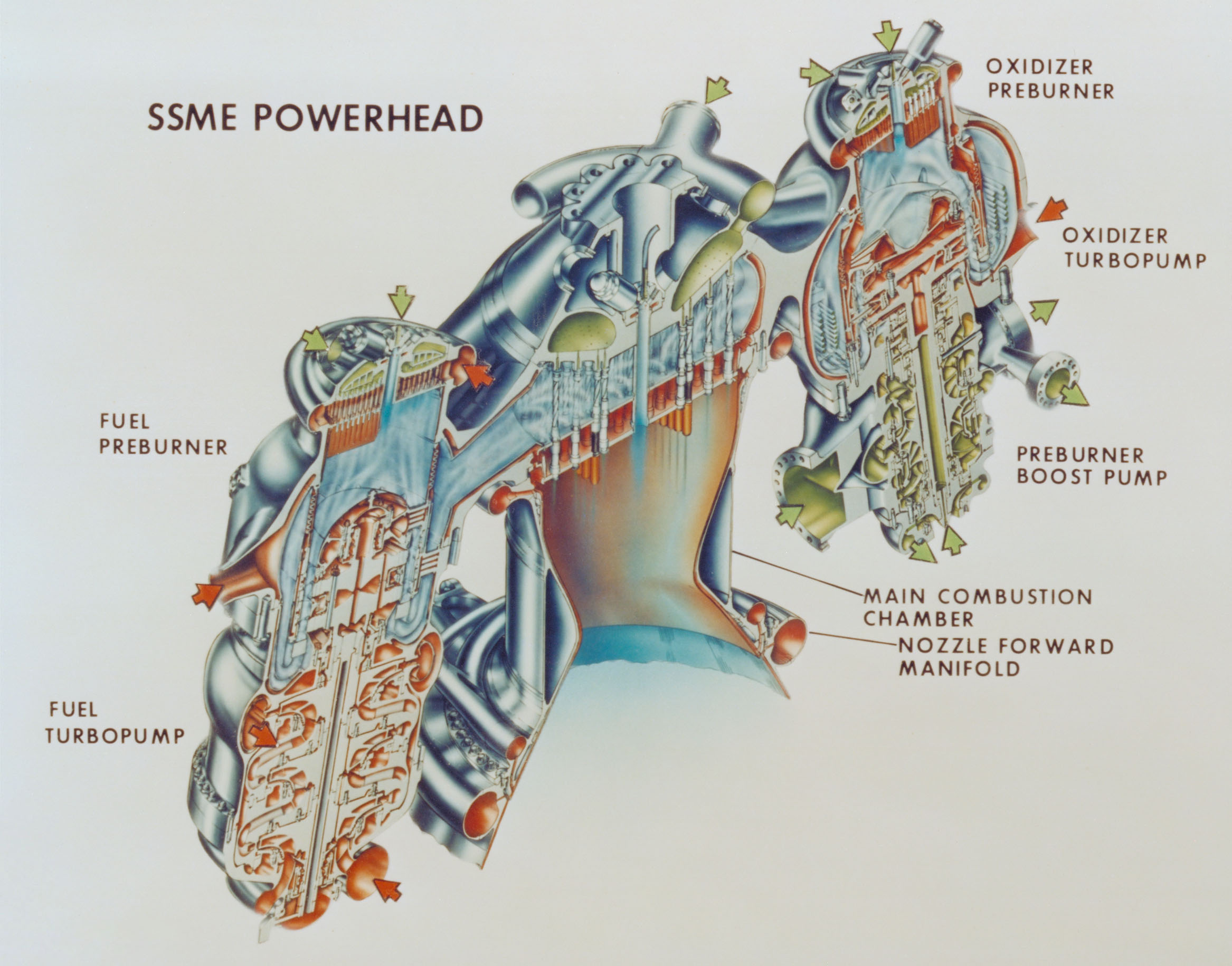|
Powerhead (rocket Engine)
A liquid rocket engine powerhead (or powerpack) is the turbopumps, preburners, and all the requisite equipment for a non-pressure-fed rocket engine cycle rocket engine, minus the combustion chamber and the expansion nozzle. See also * Integrated Powerhead Demonstrator References Rocket engines {{Rocket-stub ... [...More Info...] [...Related Items...] OR: [Wikipedia] [Google] [Baidu] |
SSME Powerhead
The RS-25, also known as the Space Shuttle Main Engine (SSME), is a liquid-fuel cryogenic rocket engine that was used on NASA's Space Shuttle and is used on the Space Launch System. Designed and manufactured in the United States by Rocketdyne (later Pratt & Whitney Rocketdyne and Aerojet Rocketdyne), the RS-25 burns cryogenic (very low temperature) liquid hydrogen and liquid oxygen propellants, with each engine producing thrust at liftoff. Although RS-25 heritage traces back to the 1960s, its concerted development began in the 1970s with the first flight, STS-1, on April 12, 1981. The RS-25 has undergone upgrades over its operational history to improve the engine's thrust, reliability, safety, and maintenance load. The engine produces a specific impulse (''I''sp) of 452 seconds (4.43 kN-sec/kg) in vacuum, or 366 seconds (3.59 kN-sec/kg) at sea level, has a mass of approximately , and is capable of throttling between 67% and 109% of its rated power level in one-pe ... [...More Info...] [...Related Items...] OR: [Wikipedia] [Google] [Baidu] |
Integrated Powerhead Demonstrator
The integrated powerhead demonstrator (IPD) was a U.S. Air Force project in the 1990s and early 2000s run by NASA and the Air Force Research Laboratory (AFRL) to develop a new rocket engine front-end ("powerhead", sometimes also termed a powerpack) that would utilize a full flow staged combustion cycle (FFSC). The prime contractors were Rocketdyne and Aerojet. The long-term design goal was to apply the advantages of FFSC to create a reusable engine with improved life, reliability and performance. The powerhead demonstrator project was to develop a demonstrator design of what could become the front-end for a future engine development project. No subsequent funding was made available by public policymakers, so no full engine design was ever completed. The turbines were also planned to feature hydrostatic bearings instead of the traditional ball bearings. History On July 19, 2006 Rocketdyne announced that the demonstrator engine front-end had been operated at full capacity. Acco ... [...More Info...] [...Related Items...] OR: [Wikipedia] [Google] [Baidu] |
